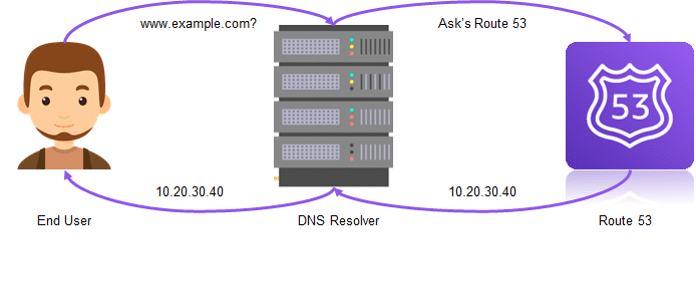
Use the command "apt–get install apache ubuntu" to install Apache on Ubuntu. Before you install Apache, check that your firewall software is allowed. Ubuntu's firewall program is called ufw. Open ufw and select the option "allow connections". You will see a message indicating whether Apache is allowed. If Apache is allowed, the output should show "active" for Apache.
Prerequisites
Before you install Apache on your Ubuntu-based computer, you need to ensure that the system has the proper prerequisites. For example, you must have access to the sudo command, which allows you to edit files. Additionally, you will need to have administrator privileges on your user account. You can now install the web server after you have completed all the prerequisites.
Enable port 443. Example: sudo enable firewall port 443. In addition, you should ensure that you have at least 50MB of free space. After installation is complete the Apache server will consume about 10MB of diskspace. The space required will vary depending on the configuration options you choose, the third-party modules that you use, and the size your site. Apache requires an ANSI C compiler. If you're using a different compiler vendor, ensure it supports ANSI C. Make sure your PATH includes the basic tools for building.

Configuring an UFW firewall
Once UFW has been installed on your computer, you will need rules to secure your computer from unauthorized connection. There are many options available for configuring the UFW firewall rules. First, you need to define a netmask to prevent UFW from allowing connections from an IP address that doesn't belong on your subnet. Second, you must create a policy that controls the number allowed connections. UFW uses a default policy called "deny". This policy blocks all connections and allows you to connect only to specific accounts. You can also delete rules by number or name.
UFW can also be used to configure your firewall so that it blocks all incoming connections but allows only outgoing. This is the safest default. You can block IP address ranges, programs or ports. Or you can do a combination. To modify the policy, make changes to /etc/default/ufw.
Reloading Apache's web server
It's not difficult to restart an Apache webserver on Ubuntu. You can do it using the systemctl command. The process can take several minutes to complete. Unexpected interruptions may occur if your configuration is too complex.
Check all configurations, then restart the webserver. Check that the system does not contain any zombie processes. This is crucial because the web server can sometimes be interrupted by an unstable Internet connection.

Configuring virtual hosts
Configuring multiple Apache virtual hosts is one of the easiest ways to allow multiple domains on a single Ubuntu server. This is an extremely powerful tool that allows you run multiple domains and host them all on one server. In addition, virtual hosts are flexible and can be configured for any host name.
Because there are so many options, this can make it difficult for beginners. You can do it by following these simple steps. First, create the directory where your files will be stored. This will be your document root, which is the directory where the site's data will be stored. The default directory is /var/www. But virtual hosts will have a different one.
FAQ
What is a responsive web design?
Responsive Web Design, also known as RWD, is a way of designing websites so that content displays on all devices. This includes desktop computers, tablets (tablets), smartphones, etc. This allows users to simultaneously view a website from one device while still being able to access other features, such as navigation menus and buttons. The goal of RWD is to ensure that when a user views a site on any screen size, they view the exact version of the site.
You would, for example, want to make sure that a customer can view your website even on a mobile device.
A responsive site will automatically adjust its layout based on the device being used to view it. The site will display exactly the same way on a laptop as if it were viewed on a desktop computer. It will look different if you view the page from your phone.
This means that you can create a single website that looks great on every type of device.
What Websites should I make?
This depends on your goals. To build a business around your website, you may want to focus on selling products online. To do this, you will need to create a strong eCommerce website.
Other popular types of websites include blogs, portfolios, and forums. Each of these requires different skills and tools. If you are looking to start a blog, then you need to know about blogging platforms like WordPress and Blogger.
It is important to choose the right platform for your site. There are many themes and templates that you can use for free.
After you have chosen a platform, it is time to add content. Pages can include images, videos, text and links.
When you are ready to launch your new website, you can publish it online. Your site is now available for visitors to view in their browsers.
WordPress is a CMS?
The answer is yes. It's a Content Management System. CMS is a way to manage your website content without having to use an application such Dreamweaver/Frontpage.
The best part about WordPress is that it's free! Hosting, which is usually provided by your ISP, is free.
WordPress was originally created to be a blogging platform. But WordPress now offers many more options, such as eCommerce sites or forums, membership websites and portfolios.
WordPress is easy to install and set up. It is necessary to download the installation file from their site and upload it on your server. Simply visit the domain name from your web browser, and then log in to the new site.
After installing WordPress on your computer, you'll need a username and a password. Once you have logged in, a dashboard will appear where you can view all of your settings.
This is where you can add pages or posts, images and links to them. This step may be skipped if you feel confident editing and creating content.
But if you'd rather work with someone, you can hire a professional website designer to handle everything.
Is web development difficult?
Web Development can be challenging, but there are many resources online to help you learn.
Just find the right tools, and then go through each step.
YouTube and other platforms have many tutorials. You can also use free online software such as Notepad++, Sublime Text, etc.
You can also find many books in libraries and bookstores. Here are some of the most popular:
O'Reilly Media, "Head First HTML and CSS"
O'Reilly Media's Head First PHP & MySQL 5th edition
"PHP Programming for Absolute Beginners" by Packt Publishing
I hope this article was helpful.
Statistics
- In fact, according to Color Matters, a signature color can boost brand recognition by 80%. There's a lot of psychology behind people's perception of color, so it's important to understand how it's used with your industry. (websitebuilderexpert.com)
- When choosing your website color scheme, a general rule is to limit yourself to three shades: one primary color (60% of the mix), one secondary color (30%), and one accent color (10%). (wix.com)
- It's estimated that in 2022, over 2.14 billion people will purchase goods and services online. (wix.com)
- The average website user will read about 20% of the text on any given page, so it's crucial to entice them with an appropriate vibe. (websitebuilderexpert.com)
- Studies show that 77% of satisfied customers will recommend your business or service to a friend after having a positive experience. (wix.com)
External Links
How To
What is website hosting?
Website hosting describes where visitors go when they visit a site. There are 2 types.
-
The cheapest option is shared hosting. Your website files reside on a server controlled by someone else. Customers visiting your website send their queries over the Internet, to that server. The server owner then forwards the request to you.
-
Dedicated hosting: This is the most costly option. Your website is only accessible from one server. No other websites share space on the server, so your traffic stays private.
Most businesses choose shared hosting because it's less expensive than dedicated hosting. Shared hosting allows you to have your website run by the company who owns the server.
Each option has its pros and cons. Here are the differences:
Sharing Hosting Pros
-
Lower Cost
-
Easy to Set Up
-
Frequent Updates
-
It can be found at many web hosting providers
Shared hosting is often as cheap as $10 per month. However, this price typically includes bandwidth. Bandwidth refers to the amount of data you can transfer across the Internet. Even if you are only uploading photos to your blog site, high data transfer rates can still cost you extra.
Once you start, you'll quickly realize why you were paying so much for your previous host. Most shared hosts provide very limited customer support. Although their techs may help you with setting up your site, it's not a common practice.
Look for a provider who offers 24/7 phone support. They will assist you with any problems that may arise while you're sleeping.
Cons of dedicated hosting
-
More Expensive
-
Less common
-
Requires special skills
With dedicated hosting, you get everything you need to run your website. You don't need to worry about bandwidth usage or RAM (random access memory).
This means you'll have to spend more upfront. However, once you start running your business online, you'll find that you won't need much technical assistance. You'll quickly become an expert at managing your server.
So Which Is Better For My Business?
The answer depends on what kind of website you want to create. If you're selling products only, shared hosting might work best. It's easy to set up and maintain. It's easy to set up and maintain, as you share a server with other sites. You will likely be updated frequently.
If you are looking to create a community around your brand, dedicated hosting is the best option. It allows you to focus on building your brand and not worrying about managing your traffic.
If you're looking for a web host that offers both options, we recommend Bluehost.com. Bluehost.com provides unlimited monthly data transfer, 24/7 support, free domain registration and a 30-day money back guarantee.